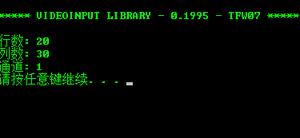Python基础:iter函数的两个参数

Python中的函数非常多,而且使用频繁。今天小编为大家带来Python中iter函数的用法,后续的文章也会有涉及这个函数的运用。
Python 3中关于iter (object[, sentinel)] 方法有两个参数。
使用iter (object) 这种形式比较常见,iter (object, sentinel) 这种形式一般较少使用。
1.iter (object)
Python官方文档对于这种形式的解释很容易理解。
此时,object必须是集合对象,且支持迭代协议(iteration protocol)或者支持序列协议(sequence protocol)。
说白了,也就是实现了__iter__() 方法或者 __getitem__() 方法。
l = [1, 2, 3]
for i in iter(l):
print(i)
2.iter (object, sentinel)
Python官方文档对于这种形式的解释是:如果传递了第二个参数,则object必须是一个可调用的对象(如函数)。此时,iter创建了一个迭代器对象,每次调用这个迭代器对象的__next__()方法时,都会调用object。
如果__next__的返回值等于sentinel,则抛出StopIteration异常,否则返回下一个值。
class TestIter(object):
def __init__(self):
self.l=[1,2,3,4,5]
self.i=iter(self.l)
def __call__(self): #定义了__call__方法的类的实例是可调用的
item = next(self.i)
print ("__call__ is called,which would return",item)
return item
def __iter__(self): #支持迭代协议(即定义有__iter__()函数)
print ("__iter__ is called!!")
return iter(self.l)
t = TestIter() # t是可调用的
t1 = iter(t, 3) # t必须是callable的,否则无法返回callable_iterator
print(callable(t))
for i in t1:
print(i)
# 它每次在调用的时候,都会调用__call__函数,并且最后输出3就停止了。
True
__call__ is called,which would return 1
1
__call__ is called,which would return 2
2
__call__ is called,which would return 3
在文件读取时使用:
import os
import hashlib
def bytes2human(n):
# 文件大小字节单位转换
symbols = ('K', 'M', 'G', 'T', 'P', 'E')
prefix = {}
for i, s in enumerate(symbols):
# << 左移” 左移一位表示乘2 即1 << 1=2,二位就表示4 即1 << 2=4,
# 10位就表示1024 即1 << 10=1024 就是2的n次方
prefix[s] = 1 << (i + 1) * 10
for s in reversed(symbols):
if n >= prefix[s]:
value = float(n) / prefix[s]
return '%.2f%s' % (value, s)
return "%sB" % n
def get_md5(file_path):
"""
得到文件MD5
:param file_path:
:return:
"""
if os.path.isfile(file_path):
file_size = os.stat(file_path).st_size
md5_obj = hashlib.md5() # hashlib
f = open(file_path, 'rb') # 打开文件
read_size = 0
while read_size < file_size:
read_byte = f.read(8192)
md5_obj.update(read_byte) # update md5
read_size += len(read_byte)
hash_code = md5_obj.hexdigest() # get md5 hexdigest
f.close()
print('file: [{}]
size: [{}]
md5: [{}]'.format(
file_path, bytes2human(read_size), hash_code))
return str(hash_code)
def get_filemd5(file_path):
# 使用迭代器读取文件获得MD5
if os.path.isfile(file_path):
file_size = os.stat(file_path).st_size
md5_obj = hashlib.md5() # hashlib
f = open(file_path, 'rb') # 打开文件
read_size = 1024
for chunk in iter(lambda: f.read(read_size), b''): # 使用迭代器读取文件获得MD5
md5_obj.update(chunk)
hash_code = md5_obj.hexdigest() # get md5 hexdigest
f.close()
print('file: [{}]
size: [{}]
md5: [{}]'.format(
file_path, bytes2human(file_size), hash_code))
return str(hash_code)
if __name__ == '__main__':
md5 = get_md5(
r'C:README.md')
md5_1 = get_filemd5(
r'C:README.md')
------------------------输出
file: [C:README.md]
size: [941B]
md5: [d22b8f76dcd8cfbfd4669d9d8101077e]
file: [C:README.md]
size: [941B]
md5: [d22b8f76dcd8cfbfd4669d9d8101077e]
根据示例来看,iter函数还是比较容易理解的,更多Python学习推荐:云海天Python教程网
以上是 Python基础:iter函数的两个参数 的全部内容, 来源链接: utcz.com/z/528550.html





